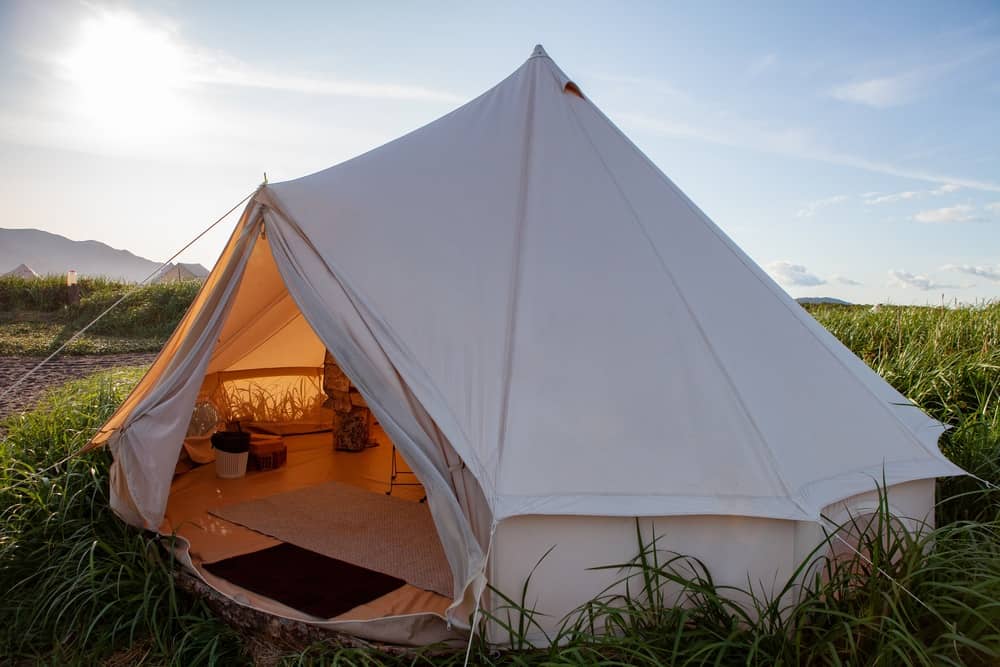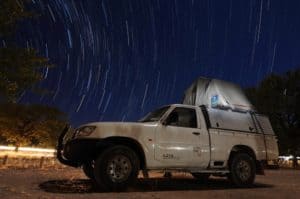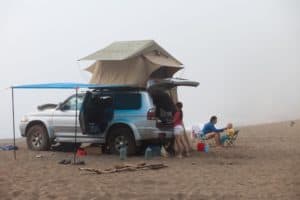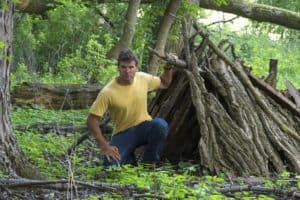
Camping today can mean many things to many people; there is no wrong way to go camping. Whatever knowledge you currently have of the camping world, if any, you can only benefit from knowing what camping styles are out there. Are you a traditionalist who just wants their experience centered around a reliable tent? Are you into utilizing vehicles for your travelling and camping needs? Do you want to bike to the campsite, or travel on foot?
Some campers just want to comfortably get away from the world and unplug for a day, blending nature with modern amenities. Some campers want a learning experience for themselves and their children as they learn more about the plants and animals not present in their own backyard. There are also campers who just want to rough it. They love the challenge of surviving in the wilderness with nothing but what they can carry.
Whether you are looking to try a new type of camping, or are new to the adventure altogether, this list will give you insight into several of the different camping types out there.

What is traditional about camping, anymore? Honestly, it varies from person to person, family to family. There are some common elements that can be found across the spectrum. The general goal is always to get closer to nature, enjoy the fresh air and trees and grass and rivers or lakes, and most importantly, the stars at night. Most camping trips are shared experiences with families, but individuals love to camp too.
Traditional camping is what we are most familiar with. It can involve a vehicle as part of the campsite, but there is almost always a tent. The size and structure of the tent depends on how the campers are traveling to their chosen site, and how robust they want the trip to be.
While it is true that you can get away from technology at this time, many traditional campers incorporate it into the experience. They go to locations, usually official campgrounds, that allow for a cell signal. For example, after a day of hiking through the woods, you and your family might watch a romantic drama series or action movie together on a tablet at night.
Traditional campers bring bug and pest repellents, refrigeration units, cooking tools, their journey to the great outdoors. Some even bring grills! The spirit of traditional camping is to follow the traditions family and friends have done to get closer to nature.

While average camping today could seem glamorous to pure survivalists, this camping type is quite cushy. Glamping takes the luxurious resort vacation experience and places it outside in visually stunning locales made for the camping-lite crowd. A newbie to camping with more interest in fresh air, and less interest in dirt and bugs, should consider opting for this.
There are also ways to take a traditional camping trip and glam it up yourself. The point is to bring the best travel safe amenities with you. Glampers bring warm lighting to hang from trees, tentpoles, the camping vehicle, etc. They bring their best bedding and pillows to put on a lush blow-up mattress. Glampers make sure the tent they bring is large enough to house all these decorations. Picnic tables are easily upgraded into a dinner table from home. Warm lighting from mason jars containing candles, pretty napkins, and the best dishes and silverware are glamping must-haves.
Sure, this style is likely the least practical on the list unless you go to a specific glamping resort. Nevertheless, the unique experience is often worth it to luxury-focused campers.

Many campers bring a vehicle out with them to camp. Some have it parked far enough away so that it doesn’t distract from the out-in-the-wilderness feel. Some keep it parked close by, and even utilize it in their personal or family’s campsite to act as storage for necessary supplies. Usually, though, a classic tent and campfire is involved.
Truck bed camping is exactly what it sounds like—camping outside using the truck bed for primary shelter. The look of the shelter depends on the truck you have. In this case, we will focus on pick-up trucks. The larger models are perfect to pitch a tent in.
There are actual truck bed tents made for this kind of camping. They are simple to set up, no stakes or ropes necessary. You’ll have a shelter that keeps you off the ground, away from pests. Sleeping bags, if not a full-size air mattress, can fit perfectly in the truck bed. Add a mattress frame to keep the bed above the wheel wells and provide a little more storage. You won’t miss pitching a tent on the ground at all.

SUV camping is the sister to truck bed camping, in that it incorporates your larger vehicle into the campsite as your primary shelter. Like truck bed camping, you aren’t investing money into an RV, and you are providing yourself a buffer zone between the ground and your sleeping bag.
Since the shelter is in the back seat of your SUV, you won’t have to worry about setting up a tent. However, space must be considered more with SUV camping, because the place you’d normally store your supplies is where you will sleep. Some campers remove the back seats to make room for the mattresses or sleeping bags.
The popularity of SUVs, minivans, and pick-ups among campers means there are many accessories available to make your outdoor journey a breeze. SUV camping has become so common, you could consider it traditional as well.
Naturist camping isn’t too much different from the other styles we’ve discussed. You still travel to a spot outside for a welcome change of scenery. Either alone or with friends, you pitch a tent or set up a campsite adjacent to a vehicle. You decide how close to nature you want to be, and how many modern tools and tech you want to take with you, if any. Your campsite is usually a commercial location, one that is more or less glamorous depending on your tastes.
The only real and noticeable difference between this and traditional camping is the lack of clothing. Naturists, or nudists, practice open and social nudity, and therefore camp in the way caters most to them. Many resorts are open to outsiders interested in being in the outdoors sans clothes, so if you are considering a massive change of pace, this camping style might be fun to try.
Are you an ATV rider? Are you also into camping that is more rugged and based in the backcountry? If so, ATV camping will be right up your alley. Riding through nature on a sturdy ATV is exhilarating. An off-road vehicle can take you through terrains that the average camping vehicle can’t go, and that are too challenging to reach on foot. ATV camping borrows from other styles on this list. For the most part, ATV campers ride for days at a time through rough, unpaved trails in flat-lands or forests alike.
If ATV camping sounds like something you want to invest in, you must take good care of your off-road vehicle before and during the trip. Get your off-road vehicle checked out before travelling. When packing, you want to bring a good repair kit. You won’t be able to take everything with you, but at least have enough in the kit to get back home, or at least to civilization, safely.
It is advised that you bring a GPS tracking device, because you can venture into uncharted territory before you know it. That’s part of the adventure, but you don’t want to find yourself completely lost. Preparation is key to ATV camping.

Also known as minimalist camping, primitive camping is as rough as it gets. This style is for the daring, independent, self-sufficient adventurers who want to test their limits and truly survive on as little modern amenities as possible. Primitive campers steer clear of commercial campgrounds, opting for secluded areas. They travel to places with no running water, no bathrooms, and no cell service. Travel is usually on foot, and supplies are limited to the absolute bare necessities. Even survivalist backpackers take a tent and food along. Primitive campers do not.
Primitive camping is also on the cheaper side, since there is no commercial location space to rent, nor a gas-guzzling vehicle to bring.
This style of camping is not for the faint of heart, nor for the inexperienced, especially on your own. Survival skills, such as starting fires, pitching simple tents, and avoiding dangerous wildlife, are crucial.
The greatest thing about primitive camping is the absolute solitude. There is no need to worry about camping neighbors. You can expect to hear and see and smell nothing resembling modern, industrialized life. Primitive campers are consumed by the quiet at night, and for many, it is a blissful experience worth the hardy trek.
Recent Posts:
Recent Gear Reviews:

reviwedAF is an independent website created by outdoor enthusiasts. The views expressed on this site may come from individual contributors and do not necessarily reflect the view of reviewedAF or any other organization.